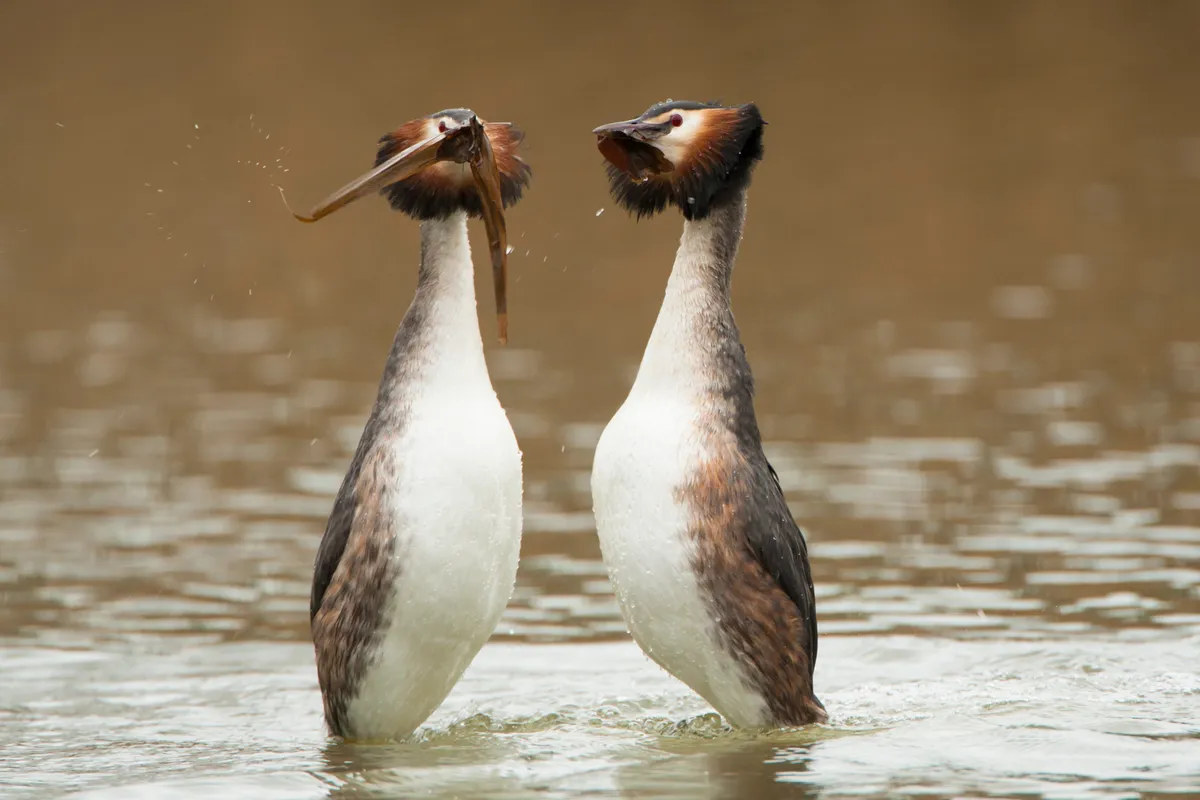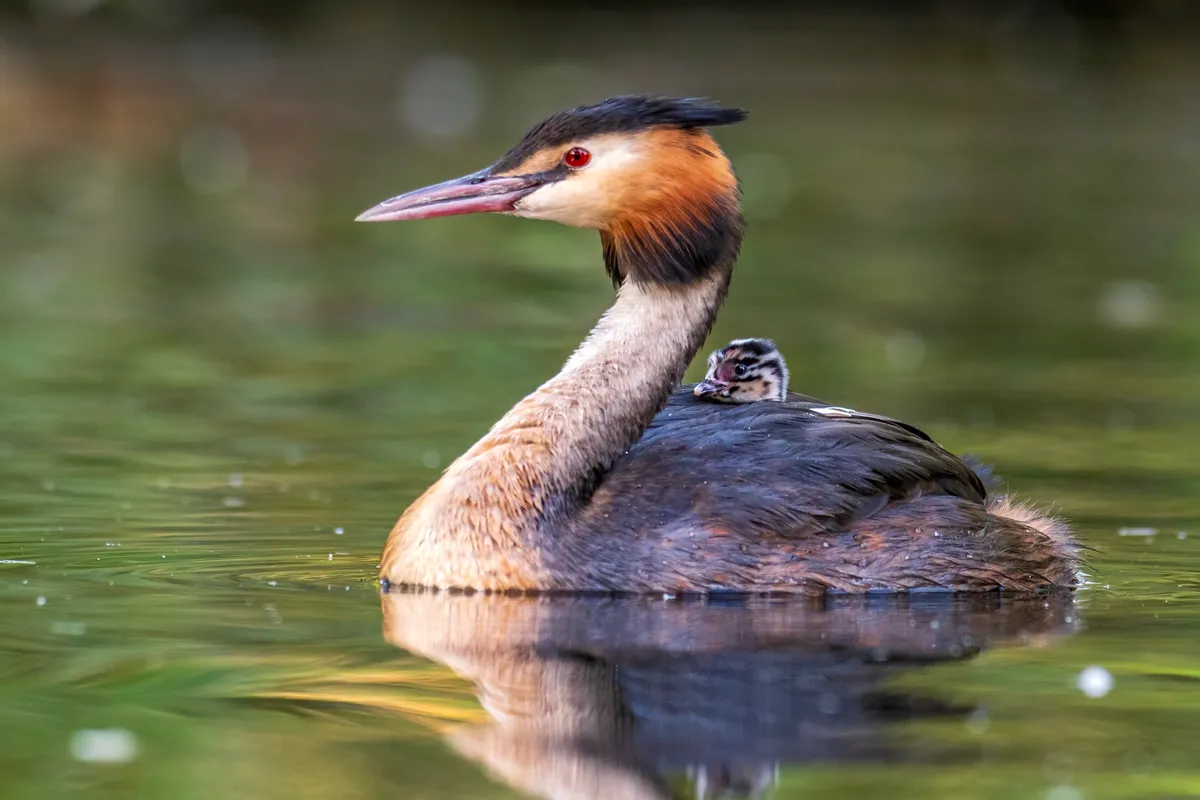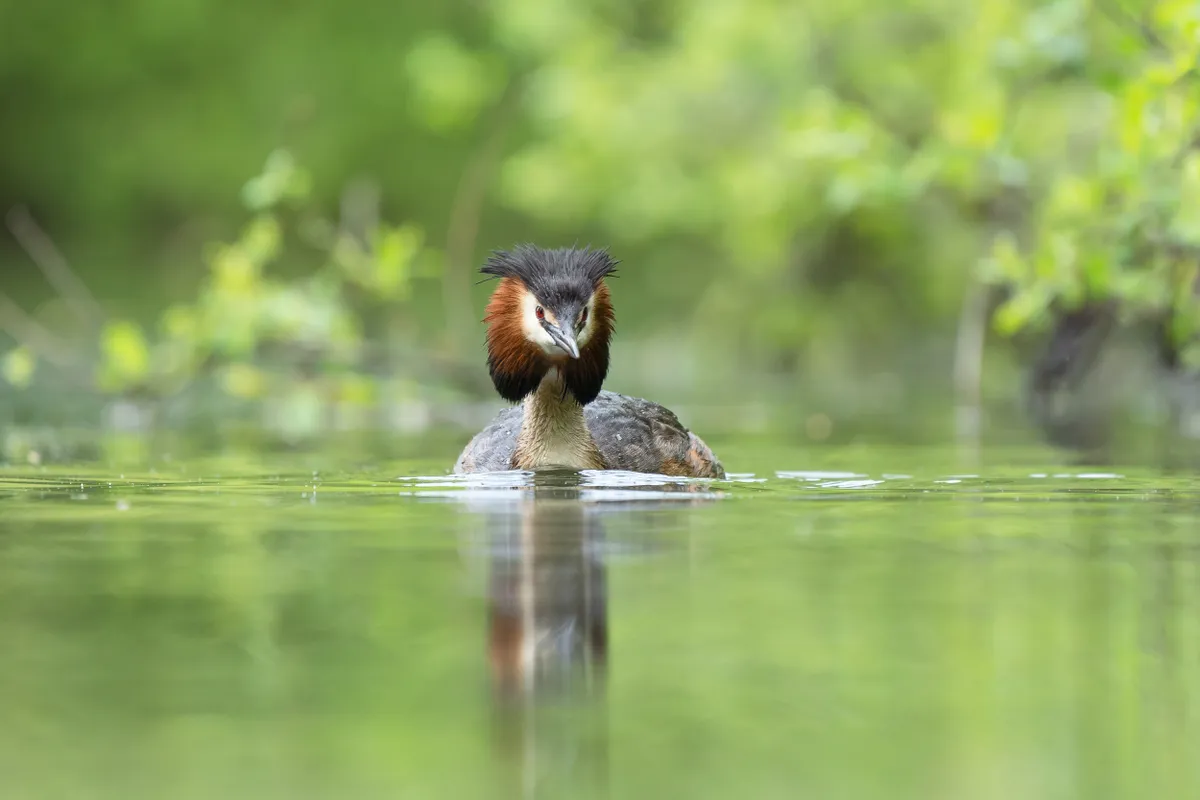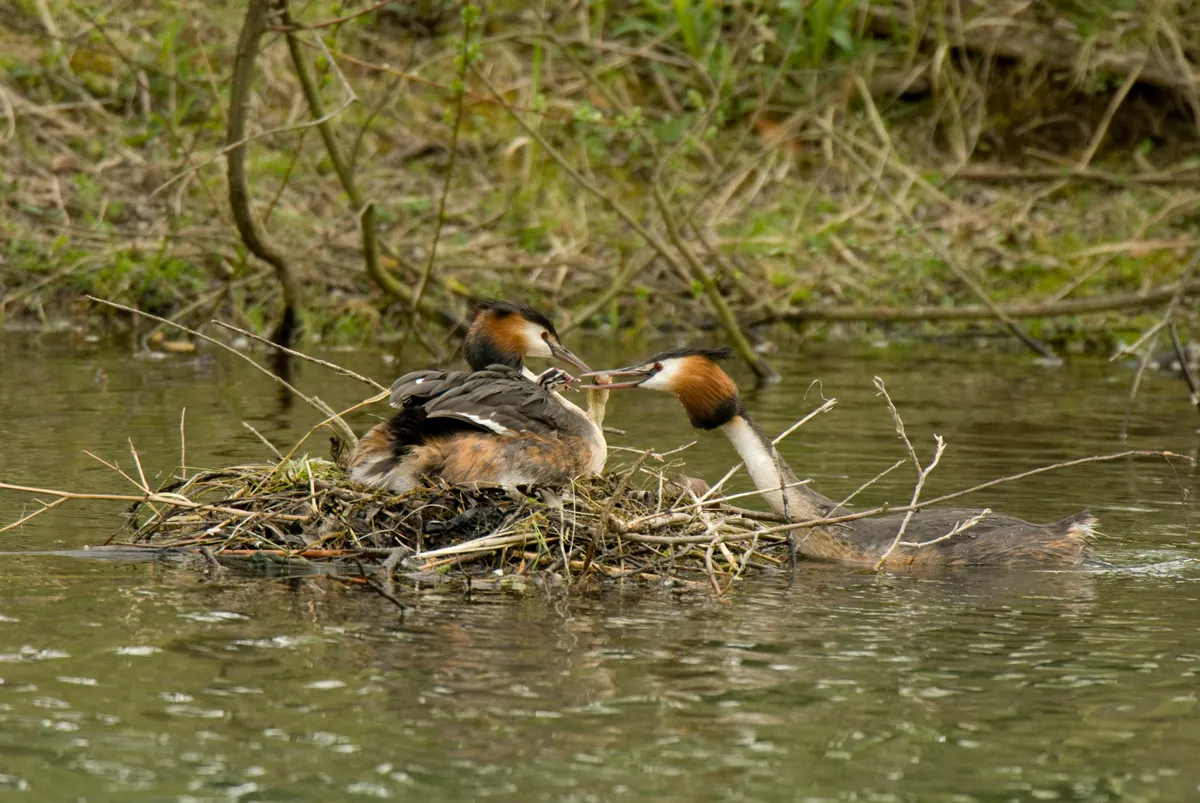The great crested grebe (Podiceps cristatus) is the sort of bird that invented PR before people did.
Not only is it elegant and colourful, it also performs a fantastic courtship display that has been described as “water ballet,” and when the chicks are very young, it carries them snuggled on to a parent’s back – the ultimate Instagram “happy families” shot.
In this guide we take a closer look at the great crested grebe, revealing what it looks like, where you can see it, nesting habits and courtship display.
Interested in learning more about Britain’s waterbirds? Check out our guides to wading birds, swans, rails and geese.

- Tern guide: UK species and how to identify them
- Guide to Britain’s swans: species identification, folklore and where to see them
- Guide to Britain’s geese species: how to identify and where to see
How to identify the great crested grebe

This is the largest of our grebes, with the longest neck and the longest bill, the latter being pink. The bill is dagger-like in shape, useful for grabbing fish underwater, which is its main feeding routine.
In common with other grebes, it has very clear differences in summer and winter plumage. It is strikingly handsome when breeding, with attractive red-brown cheeks, a ragged dark double-crest and warm brown upperparts. In winter it becomes much whiter, with just a thin black crown against a very white head and neck.
Great crested grebe habitat

The great crested grebe is easy to see, because it thrives in many places that people like, such as broad rivers and canals, as well as amenity lakes and reservoirs, and it is something of a fixture in nature reserves. So, despite a breeding population of only a few thousand pairs, it is familiar to most people who love being outdoors.
There is one unexpected sideline, though. In winter, a good many individuals go to the coast, where they are often seen in shallow, sheltered seas; many people don’t expect to see them on salt water.
Great crested grebe courtship
Credit: WWT
February is never dull if you’re a great crested grebe. It is the month when the bird’s thoughts turn to courtship and, through an intricate dance on the water’s surface, a pair of grebes forges a powerful bond that will enable them to successfully rear a brood of youngsters.
The two birds weave and bob, dancing and diving together and bringing a balletic brilliance to the dreariest of winter reservoirs. The performance culminates with the grebes holding waterweed in their bills and paddling furiously in an upright position parallel to one another, in almost perfect unison.
Great crested grebe breeding and nesting

In common with other grebes, the great crested builds a nest out of waterweed that is attached to emergent vegetation. Some nests float. When a grebe leaves its clutch of 3-4 eggs behind for a brief time, it covers them with weed.
Grebes have very long breeding seasons and may have chicks as late as October. The young chicks are striped, as if wearing prison uniform, and are fed by both parents.
Great crested grebe population
The great crested grebe is common in the UK, with 4,300 pairs, 16,500 in winter.
